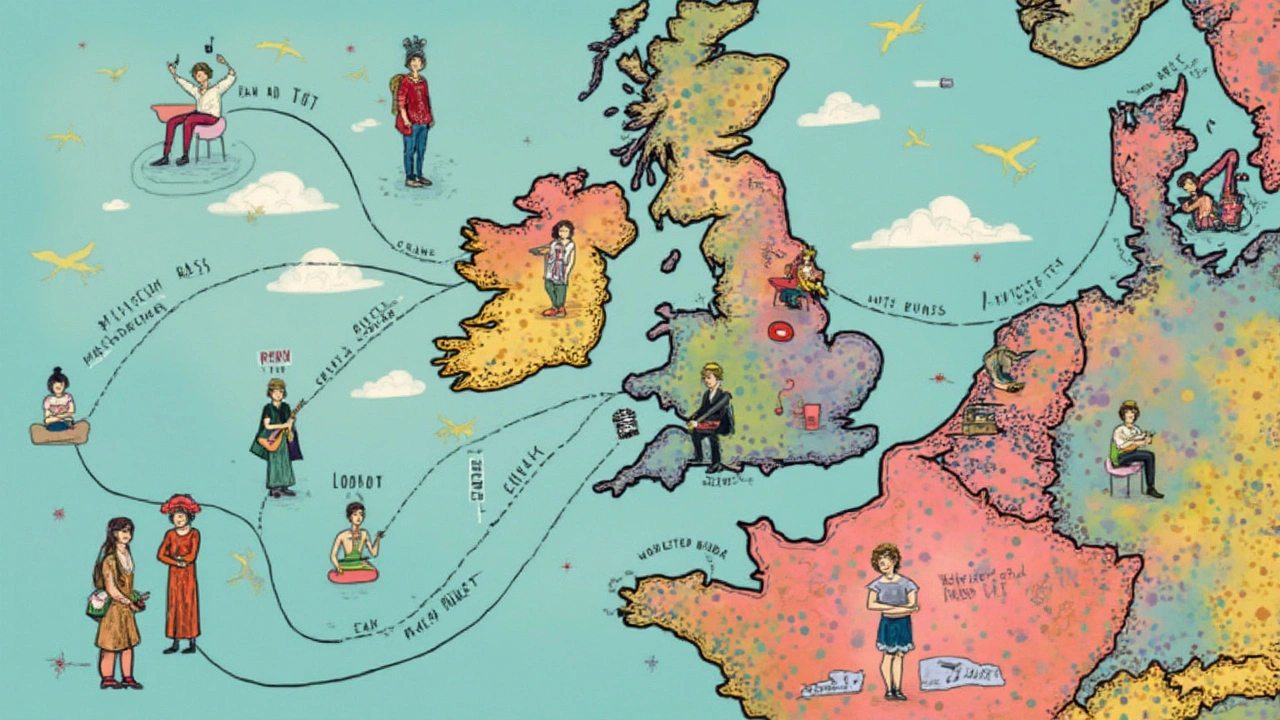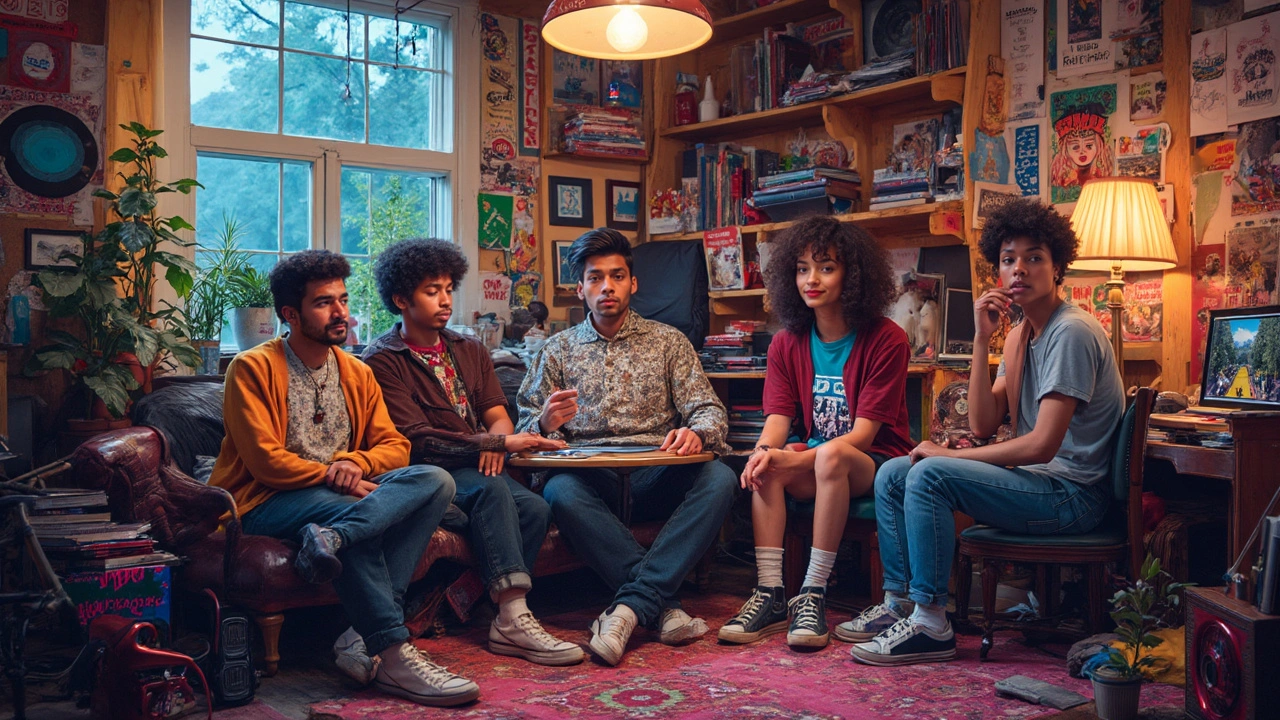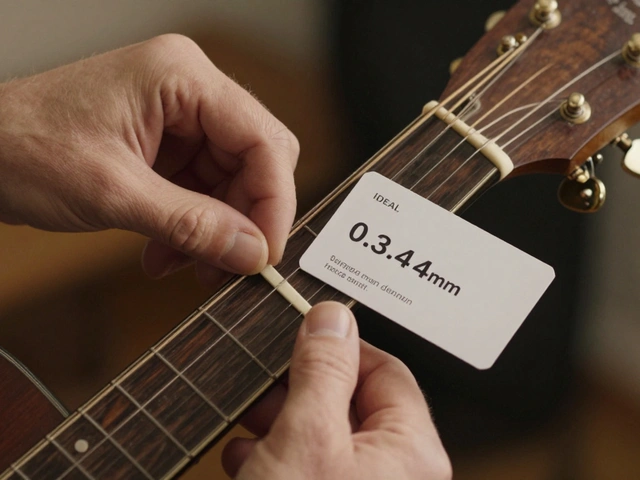Ever listened to a song and thought, 'Wait, what even is this?' Welcome to the world of subgenres, where music is sliced thinner than ever before. Gone are the days of just 'rock' or 'pop.' Today, you can stumble on chillwave, trap-metal, or bedroom pop just hopping around Spotify or TikTok. This isn't just nerdy trivia—these labels actually help people find exactly the kind of vibe they're chasing.
If you make music or just love finding new stuff, this boom in subgenres is a goldmine. It means smaller scenes have a shot at the spotlight and fans don't have to settle for one-size-fits-all playlists. You can build a soundtrack that's as unique as you are, hunting through hyper-specific tags until you hit on the perfect sound. Even better? If you feel like a music snob or just someone hungry to explore, there's always something fresh to discover and share.
- Why Subgenres Matter More Now Than Ever
- How Subgenres Are Born
- The Role of Streaming and Playlists
- Tips for Navigating the Subgenre Maze
- What’s Next in the World of Musical Subgenres
Why Subgenres Matter More Now Than Ever
It's wild how much subgenres have shaken things up in recent years. It used to be enough to say, “I like rock” or “I listen to hip-hop.” Now, those labels barely scratch the surface. The rise of streaming platforms has made it easier than ever to dive deep and find super specific music genres. Spotify even did a study in 2023 showing that more than 40% of their users searched for music by niche subgenres or moods, not just broad categories.
There’s a reason for that. People want music that feels personal. With subgenres, fans can find songs that match their exact vibe—think lo-fi chill beats for studying or hyperpop for dancing around your room. If you’re not into mainstream radio, you don’t have to force yourself to pick from just a handful of options anymore.
The same goes for artists. Instead of squeezing themselves into one big label, musicians can carve out their own corner—maybe creating something like "dark academic indie” or “pop-punk rap.” This new mix-and-match culture even sparks wild collaborations between artists who might never have crossed paths under the old rules. Just look at Lil Nas X blending country and rap, or Billie Eilish mixing electronica with somber pop.
Subgenres are also changing the game for discovery. Instead of relying on top charts, people now jump from playlist to playlist, following tags and recommendations to stumble on stuff they’d never have found before. This way, smaller artists can get in front of the right ears without needing to go viral or sign to a big label.
- Music innovation is thriving since it’s so easy to share new ideas with niche communities.
- Streaming and playlist culture have turned everyone into music curators, sparking demand for ever-more-specific labels.
- Fans connect more deeply because they feel like part of a scene, not just a number in a massive crowd.
Bottom line: Whether you’re listening or making music, subgenres make it way easier to find your people—and your sound. There’s never been a better time to dig deep and get specific.
How Subgenres Are Born
Subgenres don’t just pop up overnight out of nowhere. They usually start with someone pushing the boundaries of a music genre they love. It might be a DJ who mixes hip-hop beats with metal riffs, or a bedroom producer layering synth sounds over indie guitar. When enough people start noticing a fresh twist, give it a name, and share it online, boom—a new subgenre is born.
Usually, you’ll see these steps:
- Experimentation: Artists get bored with the usual sound. They blend styles or use weird gear, like how vaporwave took old pop songs and slowed them way down.
- Community: Other creators and fans pick up on the style. They create their own songs, share playlists, and talk about it in forums or on TikTok.
- Labeling: Someone slaps a catchy name on it. Remember how "lo-fi hip hop" went from a YouTube live stream to a whole vibe that everyone recognizes?
- Buzz: Blogs, influencers, and fans push the new sound into the mainstream. Sometimes music platforms add it as an official subgenre tag.
Social media speeds this up big time. Before the internet, it could take years for word to spread—grunge, for example, stayed underground in Seattle before breaking out worldwide. Now, unique sounds can go viral in weeks.
Here’s a look at a couple of subgenres and how they took off:
| Name | Original Genres Mixed | Started By | Year Emerged |
|---|---|---|---|
| Trap | Hip Hop, EDM | Atlanta Producers | Early 2000s |
| Chillwave | Synthpop, Indie, Dream Pop | Bloggers and Bedroom Artists | Late 2000s |
| Hyperpop | Pop, Electronic, Hip Hop | Sophie, PC Music crew | 2010s |
So next time you see a weird new tag in your feed, you’ll know—there’s a whole process and a community behind it, not just a random label. Being tuned into these trends means you’ll always be a step ahead when it comes to finding new music trends before everyone else does.

The Role of Streaming and Playlists
The rise of streaming platforms like Spotify, Apple Music, and YouTube has totally flipped how people find and listen to music. These days, discovering new subgenres in music barely takes any effort. You don’t have to hunt down obscure record stores or scan local radio—just a few taps, and you've landed on hyper-niche playlists tailored to nearly every possible mood or sound.
Streaming services actually feed the growth of subgenres. Their algorithms keep track of what you listen to and dish out suggestions based on your habits. For example, if you're into ‘synthwave’ from the ‘80s or something even more specific like ‘vapor twitch,’ Spotify’s algorithm will likely recommend artists or playlists you didn’t even know existed. That's huge for small artists and tiny scenes; suddenly, someone making “witch house” tracks in their garage can rack up listeners from all over the globe.
Playlists have become more powerful than genre categories. User-made playlists, curated lists by platforms, and even influencer-made mixes can break a new music trend overnight. Billboard even counts certain streaming numbers toward its charts, which means getting on the right playlist is almost as good as radio play used to be back in the day.
Check this out—a 2023 IFPI report found that the average streaming user in the US listens to at least eight different music genres each week, proving just how easy it is to sample across new sounds:
| Country | Average Genres Listened Per Week |
|---|---|
| USA | 8 |
| UK | 7 |
| Japan | 5 |
| Brazil | 9 |
Want to find your next favorite music trend or hidden gem? Try searching keywords or scrolling niche playlists next time you plug in. Don’t be surprised if you end up loving a micro-genre you’d never even heard of last week. Streaming isn’t just about convenience—it’s actually reshaping music discovery and giving every obscure sound a fighting chance.
Tips for Navigating the Subgenre Maze
Scrolling through all these new subgenres can feel like falling down a rabbit hole. But you don’t have to get lost. Here’s how you can actually use this explosion of categories to your advantage and find music that really fits your taste.
- Start with Genres You Already Like: Look up your favorite artist and check what subgenres they’re tagged in. Sites like AllMusic or Discogs are great for this, and even Wikipedia dives into subgenre lists for big artists. This gives you a launchpad to find related styles.
- Use Streaming Service Playlists: Platforms like Spotify or Apple Music have playlists for almost every music genre and subgenre you can imagine. Search for the mood or activity you want, or see what pops up in ‘related artists’ sections. If you listen to “indie pop,” you’ll start to see recommendations for “bedroom pop,” “lo-fi beats,” and more.
- Follow Music Blogs and Social Media Communities: Reddit, TikTok, and Discord servers are crawling with people geeking out over micro-genres. You’ll see subgenre names trending before they even show up on mainstream services. Users drop their favorite tracks, so it’s a goldmine for music discovery.
- Try Genre Map Websites: Sites like everynoise.com lay out subgenres as a giant flowchart. Click around and samples of that subgenre start playing. It’s like free speed dating, but for music.
- Don’t Sweat the Labels: Some artists defy even the weirdest subgenre tags. Use subgenres as a tool, not a limit. The whole point is to break out of boxes, not get stuck in a new set.
Quick stat: According to Spotify, there were over 6,000 unique genre and subgenre tags used by listeners in 2024 alone. That means you can always find something that matches your mood—even if your mood is oddly specific.
| Platform | Subgenre Discovery Tool | User Base (2024) |
|---|---|---|
| Spotify | Genre Playlists & Everynoise Map | 600+ million |
| Apple Music | Curated Playlists & Stations | 110+ million |
| Genre Subreddits (like r/indieheads, r/trap, etc.) | 52+ million |
The bottom line for finding your new favorite music genres and subgenres? Explore, don’t stress, and let algorithms do some of the heavy lifting. There’s a whole universe out there waiting on shuffle.

What’s Next in the World of Musical Subgenres
Get ready—things are about to get even more interesting in the subgenres scene. The pace of change is speeding up. Twenty years ago, it took years for a new sound to catch on. Now, something wild can show up on TikTok in April and by summer, it’s got a name and ten copycat playlists on streaming apps. Fast turnaround isn’t just for viral singles—whole music genres are trending, burning bright, then making space for the next big thing.
One clear trend? Subgenres are getting hyper-specific. We went from EDM to future bass, then to vapor twitch (seriously, that’s a thing). Listeners who want something new are pushing artists to experiment, mash up influences, and stretch boundaries. This is making music more personal, less stuck in rules, and honestly, more fun.
Even the data backs it up. In 2024, Spotify reported over 5,000 different genres being streamed globally. That’s a massive jump from just a few hundred a decade ago. Independent music researcher Sarah Kalinowski summed it up with:
"Microgenres aren’t just categories; they’re communities. The real power is that fans find each other, and new scenes are born overnight."
So what should you watch for next?
- Music innovation driven by AI—new tools using artificial intelligence to generate or remix subgenre styles. AI-powered mashups and ‘genre-blending’ playlists are already popping up everywhere.
- Genre labels will pop up for moods and situations—think cookingcore, study beats, or gymwave. These are less about sound, more about matching how you feel or what you’re doing.
- Artists aren’t sticking to one lane. Collabs like Latin trap meeting hyperpop are just the start. Expect even wilder combos on your favorite streaming platforms.
If you want to stay ahead of the curve, follow music tags on streaming apps, check out niche playlists, and don’t be afraid to click on something you’ve never heard of. Subgenres might be getting a little wild, but that’s what’s making discovery so much fun right now.






